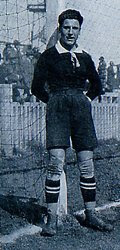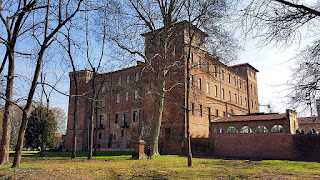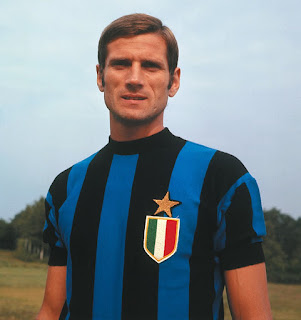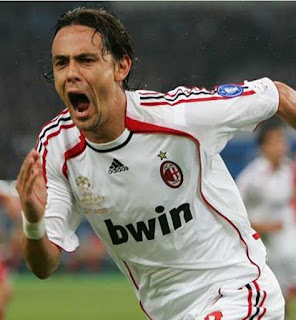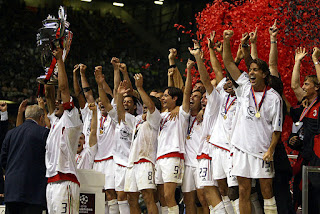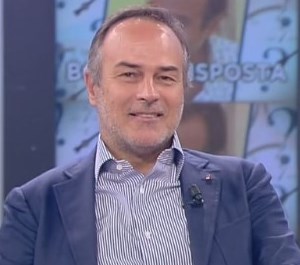Multiple champion who died tragically young
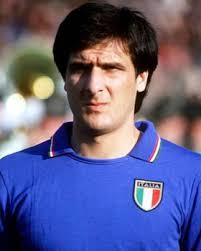 |
| Gaetano Scirea made 78 appearances for the Italian national team |
Scirea, who became an outstanding performer in the so-called libero role, was a key member of the Italy team that won the 1982 World Cup in Spain and enjoyed huge success also in club football.
In a career spent mostly with Juventus, he won every medal that was available to a club player in Italy, some several times over.
During his time there, the Turin club won the scudetto - the popular name for the Serie A championship - seven times and the Coppa Italia twice.
He also won the UEFA Cup, the European Cup-Winners’ Cup, the European Cup (forerunner of the Champions League), the UEFA Super Cup and the Intercontinental Cup.
Scirea retired in 1988 but continued to work for Juventus. Tragically, while visiting Poland in 1989 to make a scouting report on an upcoming opponent in a UEFA Cup match, the car he was travelling in collided head-on with a truck in heavy rain and he was killed, along with two fellow passengers. Their deaths were caused by the explosion of several cans containing petrol, which drivers in Poland habitually carried because of frequent fuel shortages.
 |
| Gaetano Scirea spent most of his playing career with Juventus |
From a family of Sicilian origin, Scirea’s home town was on the northern outskirts of Milan, yet it was in Bergamo, 40km (25 miles) away, that he began his career with Atalanta, making his debut in Serie A at the age of 18.
He remained with Atalanta for two seasons, before Juventus moved to take him to Turin at the age of 21. He would stay there until the end of his playing career, making 397 appearances in Serie A, scoring 24 goals.
A midfield player with Atalanta, Scirea was turned into a sweeper at Juventus, a position at the time that was seen primarily as defensive. It was when the great coach Giovanni Trapattoni arrived in Turin that he was given the role in which he was to excel.
Trapattoni felt Scirea had more to offer than simply to defend. While he had Claudio Gentile as his hard man at the back, he gave Scirea the licence to roam into midfield, to make passes, set up attacks. Elegant and composed, and with the ability to anticipate the direction of play, he made the role of libero his own.
 |
| Scirea is one of only a handful of footballers to have won every club competition in which he played |
His leadership qualities were never needed more than at the Heysel Stadium in Brussels in May 1985, when the European Cup final between Juventus and Liverpool became a scene of tragedy as an outbreak of crowd violence culminated in the collapse of a wall within the stadium, which was in a poor state of repair. Some 39 spectators died, mainly Italians. The match went ahead, but only after Scirea and his fellow captain, Liverpool’s Phil Neal, had addressed the supporters directly to ask for calm.
Juventus’s 1-0 win was a hollow victory in the circumstances, yet remains on Scirea’s record, which makes him one of only nine players in the history of the European football that won all three major UEFA football competitions.
Scirea made his debut for the Italy national team in December 1975 and quickly became an irreplaceable component of the team managed by Enzo Bearzot, playing in three World Cups and one European Championship (in 1980, when Italy finished fourth as tournament hosts).
 |
| Pipe smoking coach Enzo Bearzot made Scirea a fixture in his team |
Scirea was one of Italy’s best players at the 1978 World Cup in Argentina, where the Azzurri finished in fourth place. At the 1982 World Cup, after a quiet start in the first round group stage, Italy beat Argentina and then Brazil in the second round, later overcoming Poland 2–0 in the semi-final before the 3-1 victory over West Germany in the final saw Scirea and his teammates earn a place in World Cup history.
He bowed out after the 1986 World Cup, in which an Italian team in the throes of rebuilding lost to France in the second round. This was to be Scirea's last match for Italy, having won 78 caps.
Scirea’s death had a huge impact on his club and country. Among the steps taken to honour his name was the creation of an award given to players deemed to have had an exemplary career, while part of the Juventus Stadium is called the Curva Scirea. Bearzot, his former international manager, proposed that his No 6 shirt be retired by both the Azzurri and Juventus.
After his death, his widow, Mariella, had a career in politics, serving two terms in the Chamber of Deputies as an elected member, first under a Forza Italia ticket, then as a member of the Democratic Union for Europe. His son, Riccardo, works for Juventus on their technical staff as head of match analysis.
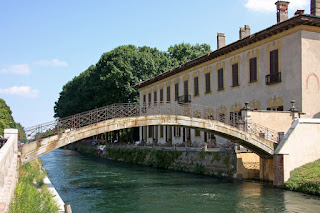 |
| Cernusco sul Naviglio takes its name from the Naviglio Martesana canal, linking it with Milan |
About 16km (10 miles) from the centre of Milan, Scirea’s home town Cernusco sul Naviglio is an elegant town rich in art and history and known for its majestic villas. It is located on the Naviglio Martesana canal. Its attractions include the Sanctuary of Santa Maria Addolorata, the Italian Gardens of Via Cavour and the 18th century Villa Alari. One of the features of the Piazza Unità d'Italia, the main square, is a mulberry tree reputed to be 130 years old.
 |
| The village of Morsasco sits on a hill between Alessandria in Piedmont and Genoa on the coast |
The village of Morsasco is best known for its castle, which rises majestically above the neighbouring houses and linked by a small paved lane to the 16th-century parish church dedicated to San Bartolomeo. The castle, mentioned in records from the 13th century, has passed through the hands of the Del Bosco, Malaspina, Lodron, Gonzaga, Centurione Scotto and Pallavicino families. A lot of the original building’s military characteristics have been removed and it is now a refined noble residence, with grand halls and beautiful rooms as the result of 18th-century expansions.
More reading:
How 'Trap' became the most successful coach in the history of Serie A
The pipe-smoking genius who turned the Azzurri into world champions
Franco Baresi: AC Milan star voted 'player of the century'
Also on this day:
1887: The birth of controversial saint Padre Pio
1922: The birth of Communist politician Enrico Berlinguer
1971: The birth of Olympic marathon champion Stefano Baldini
Home
